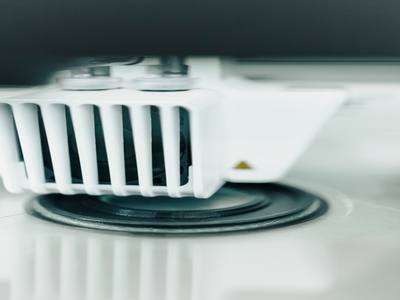In this blog post, we’ll look at how to clean a 3D printer nozzle and prevent problems from happening.
We will also discuss how to resolve any issues that might cause your printer to stop working.
Why It’s Important to Clean a 3D Printer Nozzle
A 3D printer nozzle is where the material leaves the hot end after melting.
The nozzle is essential because it affects the extrusion of the printer, and if it isn’t operating correctly, it can cause a slew of tough printing problems.
They deteriorate with time, especially when they become blocked, so it’s important to learn how to clean a 3D printer nozzle.
Finding the Source of the Problem

We’ve compiled a list of issues that may be caused by a clogged nozzle:
No Filament
If you start a print and no filament is extruded from the nozzle for the first layer, it might be due to a clogged nozzle.
However, it’s worth double-checking that this isn’t caused by the extruder, Z offset, or an unlevel bed.
Read More: DIY 3D Printer Bed Leveling. See how to level your printer bed in a few easy steps!
Nozzle Picking Up Material
This occurs when your nozzle inadvertently lays down some material and then picks it back up as it travels across the layer.
A common reason for this issue is a faulty Z offset or a non-level bed, so double-check both of these factors.
Bursts of Filament
This is when your printer should be extruding a steady amount of material in steady streams, but then suddenly produces bursts of filament.
How to Clean a 3D printer Nozzle
Exterior Debris

Debris on the outside of the nozzle is extra melted material that clings to the nozzle during printing.
This problem is usually caused by the nozzle being too low – most often while printing the first layer.
How to Clean
You can use an alcohol wipe or a moist cloth on a warm nozzle to get it clean.
If nothing else works, you can use a tiny blade, wire brush, or needle to remove any remaining debris from the nozzle.
If the nozzle is still clogged, consider changing the Z offset and fine-tuning the bed level.
The informative video below illustrates the best method for leveling your 3D printer bed:
Internal Clogs
Clogs are frequently caused by a buildup of material in the hot end.
This is when debris blocks the output hole of the nozzle, preventing the filament from coming out.
How to Clean
There are a few ways to unclog a nozzle:
- The first and most straightforward approach is to insert a tiny needle into the nozzle to pry apart and remove the debris.
- The second technique is to do a cold pull, in which the debris is completely removed from the hot end.
- The third option is to replace your clogged nozzle entirely.
If you use generic brass nozzles, start by heating the hot end to melt any solidified material that is trapped in the nozzle.
PTFE Tube Hot End Gap
A gap between the PTFE tube and the top section of the nozzle may also cause issues.
Gaps can emerge if you have a rough PTFE tube end, if the tube isn’t pushed far enough down into the hot end, or if the nozzle isn’t screwed completely into the hot end.
When a gap develops, the melted filament will flow into it.
When the filament cools, the hot end will be completely clogged. In both PTFE-lined and all-metal hot ends, this can happen.
Read More: Gaps in 3D Printing. Learn how to fill in gaps in your prints!
How to Correct
Unscrew the PTFE tube from the hot end (if possible), then fully screw in the nozzle (about 95%).
After verifying that the PTFE end is flat and that the PTFE coupler is firmly screwed into the hot end, insert the tube down the hot end.